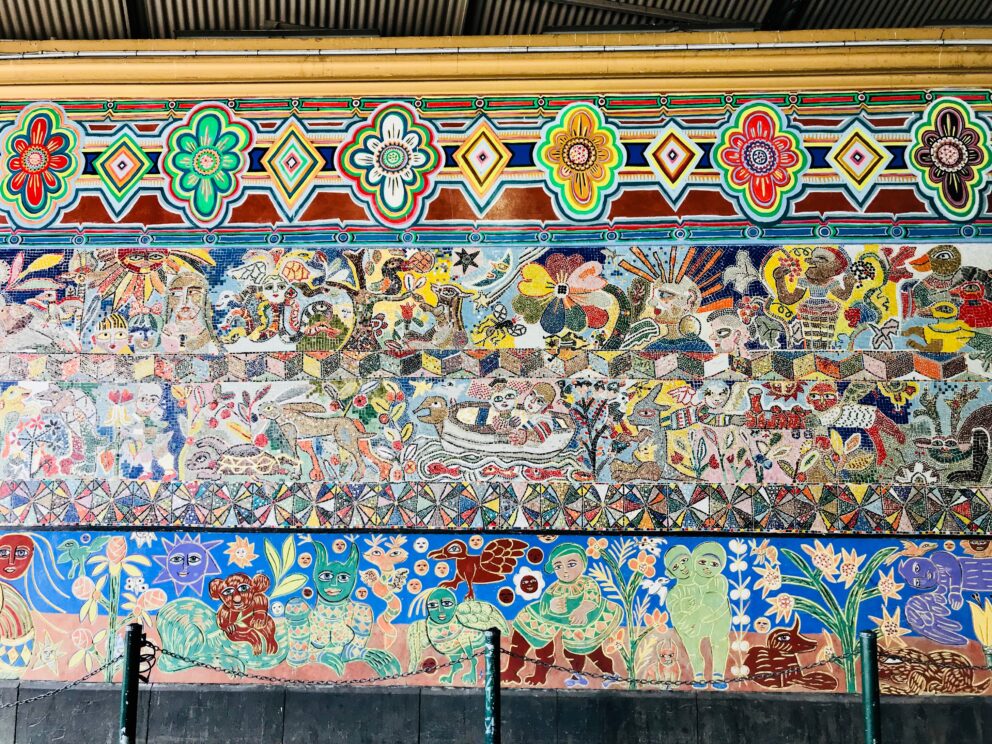Public Art is Heritage?

Did you know the National Trust has a Public Art Committee? Established in 1991, this committee of experts has been working diligently behind the scenes for over three decades to identify and protect significant pieces of public art across Victoria.
In May 1991 the destruction of Karl Duldig’s monumental ceramic relief Progress of Man and its counterpart Abstract from the office complex at 505 St Kilda Road challenged and riveted public attention to the tenuous existence of public art. The work had been a feature of the building’s façade since it opened in 1960, with its destruction arousing an immediate community outcry and realisation that there was no organisation specifically concerned with the protection of public art.
In response, Professor Bernard Smith, emeritus professor of contemporary art, convened a meeting of informed persons representing the arts, the unions and the National Trust at the National Gallery of Victoria to discuss the problems associated with public art while galvanising interested groups and individuals into action.
Around the same time, the National Trust established a Public Art Committee. Under the chairmanship of Ken Scarlett OAM, regarded as one of the country’s leading authorities on Australian sculpture, the committee began classifying public art works across Victoria for inclusion in the National Trust Heritage Register, assessing the significance of the works and determining whether they were of local, regional, state or national importance.
At the time of the committee’s establishment, the National Trust only had a small list of works of art in public places included in the Register, including a number of works by Napier Waller, such as the murals at the T&G Building, Newspaper House and Myer Mural Hall in Melbourne.
Mirka Mora Mural, Flinders St, 2018.
As of 2024 there are over 100 works classified on the National Trust Register under the designation of ‘public art’ including sculptures, fountains, mosaics, stained glass windows, monuments and memorials.
As noted by Founding Chair Ken Scarlett in 1996, an observation that is as true today as it was then, ‘public art is an essential ingredient in the complex mix of architecture, parks and gardens, streets and lanes, corporate and public buildings that subtly defines the character of the city. Any work lost diminishes and weakened the fabric of the city’ (Trust News, February 1996).
Established during a period of constant change, the Public Art Committee also took on an advocacy role, frequently required to act quickly and sometimes very publicly to ensure works were saved from threatened destruction.
Over the past 30 years there have been many wins, losses, and compromises, and in some cases public artworks that were identified and preserved by the Public Art Committee in the 1990s that are now in need of renewed attention. For example, the Committee has long advocated for the ongoing preservation of the renowned Keith Haring Mural at Collingwood Yards, restored in 2013 yet needing further restoration and protection from ongoing graffiti attacks in 2024.
Today, as it was in 1991, no single heritage organisation takes responsibility or ownership of advocating for public art and its protection across Victoria. While Heritage Victoria’s enrichment program is including more public art to the Victorian Heritage Register, including the recent addition of Ron Robertson-Swann’s Vault, there is a long way to go to ensure the ongoing acknowledgement, celebration and protection of public artworks in Victoria.
The National Trust acknowledges the tireless work and expertise of the Public Art Committee and its longstanding members and collaborators since 1991.
Ron Robertson-Swann’s Vault, Southbank 2024. Source: Heritage Victoria

+ There are no comments
Add yours